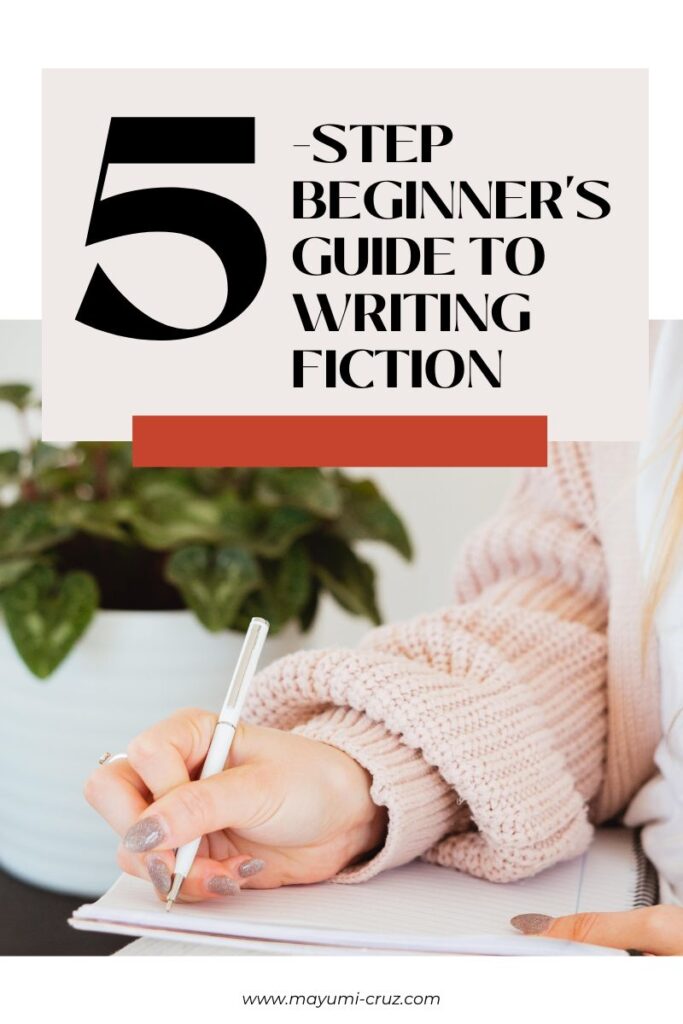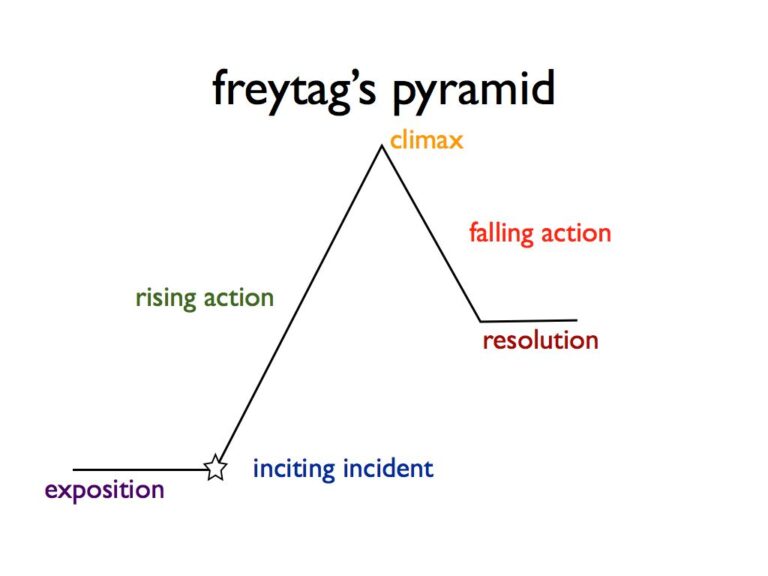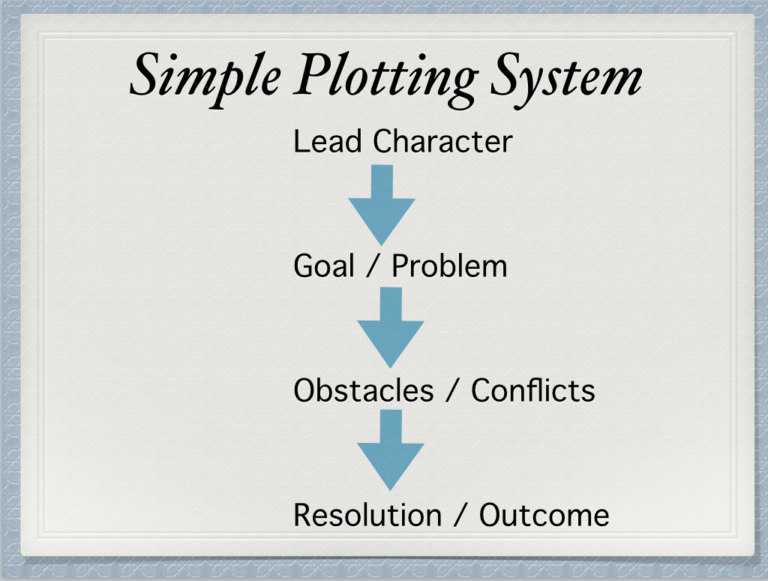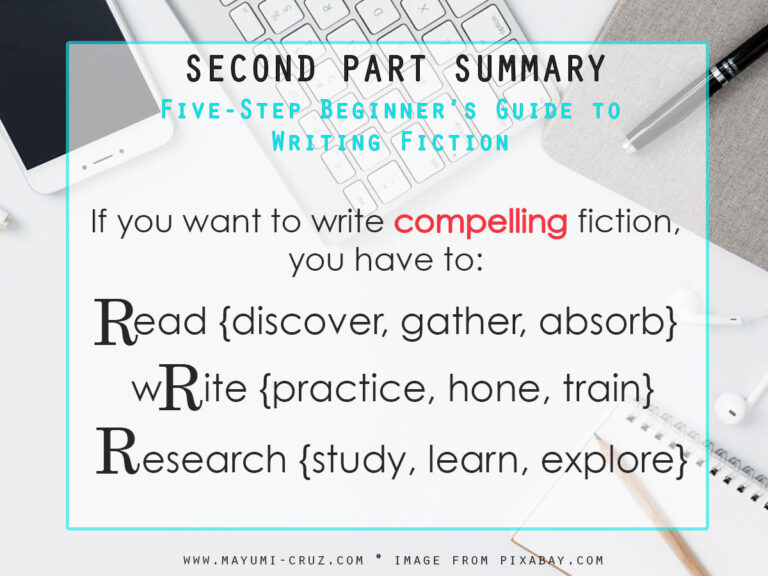
5-Step Beginner's Guide to Writing Fiction (2023) (Part 2 of 3)
In my previous post, I initially shared two of the five R’s in my 5-step beginner’s guide to writing fiction.

And now we come to the third “R.”
3. R as in RESEARCH
What should we research, or study, or explore? Why, the elements of writing, of course.
Remember what I said? Having the desire and commitment to write is better than doing nothing at all to achieve your dream.
You’ve taken the first step, and you’re awesome!
BUT… I also said that to be able to put words on the page in a clear, intelligent manner, in a way that tells a compelling story—is a skill that can be developed through learning, discipline, and practice.
Learning about what constitutes a good story—take note, not just a so-so story—is unavoidable.
Just think about it this way: learning the elements of writing is like Thanos. It is inevitable.
One more time, for emphasis: If you want to be a good fiction writer, learning about the elements of writing is, you got it, INEVITABLE.
So, here’s a brief overview of the Basic Elements of Writing:
THE BASIC ELEMENTS OF WRITING
Writers and authors differ with regard to the number of the elements of fiction.
For myself, I like to keep it simple, listing it down to six basic elements:
- PLOT
- CHARACTERS
- SETTING
- POINT OF VIEW
- STYLE
- THEME
Here is a summary for each element to get you started in learning about them.
* Plot
PLOT is not the same as the story. Plot is the sequence of events in a story. It has a beginning, a middle, and an end. Most writers use the Three-Act structure along with 19th century German novelist Freytag’s Pyramid in plotting a novel, which is further divided into five essential parts. Here is an illustration:

I like to make it simpler with terms that are easy to understand and remember, and break the plot down to shorter, manageable chunks. Here is an illustration of my simplified plot system:

In summary: There is a lead character (or characters) who has a certain problem to solve or a goal to achieve, encounters conflicts or obstacles that hinder him or her from solving the problem or achieving the goal, overcomes them in different ways, until a favorable resolution or outcome is reached.
Tip: Identify each box in one to three sentences. From there, you can expound these sentences to many more sentences, which can be scenes or chapters of your story.
* Characters
CHARACTERS are the people or other beings in your story. Creating characters is as important as plotting a story. A compelling story is not enough. You have to make your readers care for the characters in your story. You have to make sure your characters command empathy from your readers, making them love or hate them.
How to do that? Make your characters likeable but flawed. Write about people who are good at what they do but are emotionally wounded or with a tragic past (back story). Make them thinkers and doers, not just talkers and dreamers. Make them weak but also give them strength.
Make your characters come alive from the pages of your book and take your reader to a journey with them.
The main character is known as the protagonist/hero/heroine. The villain is the antagonist. There may be major and minor characters in a story.
For every genre, there is a set of characters that are expected to be included.
For romance, there is the main character (MC), the love interest (LI), the rival, the best friend/brother/sister who may or may not be an enabler. There could also be friends who may be well-meaning or joy killers.
For crime/mystery, there is a killer (or killers), the main character (or characters) who solves the crime, a sidekick, the victim (or victims), the suspect (or suspects).
Beware though, of adding too many characters in a story. It may be confusing to the reader and may dilute the plot.
* Setting
SETTING is the world you create for your characters and your story. It can be physical and chronological.
Physical is “where” the story takes place. It can be based on a real place or it can be made right out of your creative mind.
Chronological is “when” your story happens, which means time, weather condition, even the social environment. All these must make the setting believable to the reader.
Tip: Use your five senses in creating a setting. Write what you see, hear, taste, smell, and feel—either realistically or imaginatively.
* Point of View
POINT OF VIEW is the perspective of who tells or sees the story. There are three POVs that can be utilized in telling a story.
The First Person POV is where the speaker uses “I,” “me,” “we,” and where the reader sees the story only through this person’s eyes and other senses.
The Second Person POV addresses the readers as “You.”
The Third Person POV is told by a narrator who sees and senses all the action. Third Person POV may be Limited, where the reader sees the action only through a single narrator/character, or Omniscient, where the narrator sees and knows everything, moving from one character to another.
The most common choice for contemporary fiction is Third Person Limited point of view.
* Style
STYLE is defined differently from other elements of writing (Tone, Mood, Voice) by other writers.
While recognizing that it has its own characteristic, for me, it’s easier to understand it as a holistic term. In other words, Style is Tone, Mood and Voice of your story combined.
Tone is the attitude of the narrator/s in your story, which can be sarcastic, humorous, cruel, kind.
Mood is what the reader feels and notices in your story, which can be suspenseful, lighthearted, or dark.
Voice is the quality that makes your writing distinct from all the other writers. It’s how you, and only you, tell the story in your own unique way. It’s how you sound. Just like you instinctively know when a book is written by Stephen King or J.K.Rowling—because it sounds like them. It’s your writing personality, or more simply, your own personality embedded in your writing.
But consider this: all of these—Tone, Mood, Voice—make use of words.
The series of words you choose: the arrangement of words and sentences; linguistic features like grammar, tenses, spelling; symbolisms like metaphors, allegories, similes, etc.—is the Style of your writing. Through a series of word choices, you create the Tone, Mood, Voice– and combine them to a Style all your own.
I’m reiterating that I am just sharing what worked so far for me as a writer. This, in particular is just my simplified version of understanding Style as an element of writing without neglecting to include all the other important elements. Simplification just helps me remember these elements whenever I write.
* Theme
The last basic element of writing is THEME. Theme is the central and dominating idea or ideas of your story. It is the message you want to convey to your readers. For example, your story’s theme may be “Love conquers all,” “Good versus Evil,” and so on.
Now that you have an overview of the basic elements of writing, let’s revise our Summary, shall we?

In my next post, I’ll tell you about my fourth and fifth “R” in my five-step beginner’s guide to writing fiction. Stay tuned!

6 thoughts on “5 Step Proven Beginner’s Guide to Writing Fiction (Part 2)”